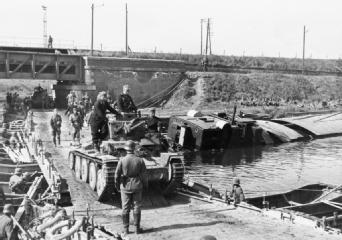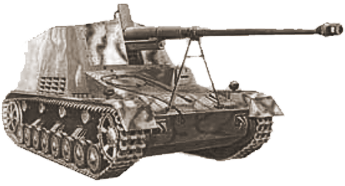The Manstein Plan vs. Case Yellow

On October 9, 1939 Hitler issued Directive No. 6; a document, that among other things, advanced German plans to attack France later that same fall. Given the code name "Fall Gelb - Case Yellow" the plan Hitler's General Staff had prepared for invading France unimaginatively involved a virtual repetition of the World War One attack into Belgium; an attack to the west into Belgium in the first stage followed by a move to the southwest into France's interior in the second stage. Nonetheless, leading officers in the German General Staff (OKH) managed to get Hitler to hold off on his plans to attack during the fall of 1939; ostensibly because the German army was worn out after the Polish campaign and needed the time to refit before moving against France. That said, disaster seemingly struck early in the winter of 1939-1940. On January 10, 1940 bad weather forced down behind Allied lines a German aircraft whose occupants were carrying enough information to give away the German invasion plan's focus.
It was this mistake that opened the door to a far more creative and explosive plan. General Erich von Manstein, a man most military historians regard as the best German commander of the Second World War if not the best operational level commander produced by any army during the War, and yet a man also justifiably convicted as a war criminal following the War, had authored and proposed a different plan over three months earlier. Nevertheless, Manstein's plan had never gotten past OKH's top echelon; notably Brauchitsch and Halder; both of whom had played the pivotal roles in rejecting Manstein's plan. With the intelligence breach of January 10, 1940 however, OKH had no choice but to look at other options. Consequently, in February 1940 the German army war-gamed Manstein's plan.
In contrast to the original plans for Case Yellow Manstein's plan coupled simplicity with deception and concentrated strength. Manstein's plan featured an aggressive operational tempo; strong combined arms German armies would attack into the Netherlands and draw allied forces to meet what appeared as the German army's main attack axis. At the same time the primary strike force, including the strongest armored concentrations, would attack through the thinly defended Ardennes and penetrate deep behind the Allied forces advancing into Northern Belgium and the Netherlands. Upon breaking out of the Ardennes the German armor would turn, but not southwest into France as the allies anticipated. Instead, the German armor would turn northwest, driving to the English Channel, and trapping the Belgian army, Dutch army, the BEF, and France's best armies in one huge pocket. In seeking to strike a decisive blow Manstein's plan met the essential elements underlying German army doctrine since its Prussian antecedents.
In spite of the strength of his ideas, Manstein still needed a break if he were to have a proper hearing on the merits of his plan. Manstein got his break when Henning von Tresckow, one of Manstein's former students at the General Staff, and one of the leading organizers of the wartime military resistance to Hitler's rule, turned out to be friends with General Schmundt, Hitler's Wehrmacht ADC. From these connections, Manstein found his most powerful supporter. Hitler reviewed Manstein's work and instantly took to the plan. As a result, on February 17, 1940 Hitler approved Manstein's plan, issued new Army Operational Orders, and consequently changed the course of history.
by Steven Douglas Mercatante



Post new comment